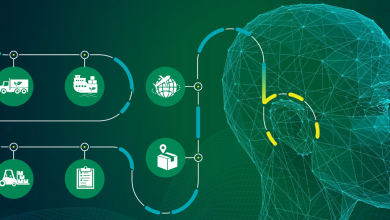Automation within the IT sector is an ever increasingly important topic. As we continually look for ways to speed up operating processes and reduce the need for human interaction with IT systems, automation becomes increasingly vital. Among the most intriguing elements within the IT, automation space is AIOps – Artificial Intelligence in Operations.
AIOps can include a broad range of tools used to monitor and automate IT operations but are defined by its use of data storage and algorithms to consume and analyse data from an enterprise’s IT systems. This can typically help with reducing downtime of systems and can be used to monitor systems when an IT professional cannot or is not needed. AIOps have become essential when it comes to identifying common issues and anomalies whilst simultaneously managing tasks that previously needed a human hand to oversee. It has become essential for supporting decisions made by key stakeholders in the IT industry.
One of the major benefits of AIOps is the improvement and enhancement of already-purchased IT investments. Any business that utilises monitoring (APM, EUEM, ITIM) and IT service management (ITSM) already can benefit from AIOps. Integrations with those tools and ingestion of their data leads to a platform that understands your topology and tools. With that data, and by using key components such as machine learning algorithms to separate IT system signal from noise, AIOps can provide solutions for real-time problems that might not otherwise have been available beforehand.
By collecting its data from various monitoring tools and systems, AIOps can become the central system for the management, control, and engagement of a sprawling IT estate.
Key functions of AIOps which improve IT Automation
There are presently five key functions that AIOps platforms provide to IT teams improving automation and operations.
1. Selecting data that is relevant to making decisions. Trying to handpick the relevant data from massive sets of information can be a huge challenge. AIOps can simplify the process, selecting data and filtering out the useless information when issues are located.
2. Spotting patterns within the data, helping to create relationships, and identifying common signs among the various data points ingested by the platform. This makes it easier for more advanced analysis to be carried out, using insights captured within the data that point to patterns that must be addressed.
3. Locating recurring problems and issues that continue to take place over time. This can give the business a greater idea of what actions it must take if a problem is being recognized on a persistent basis.
4. AIOps also benefits a business by making it easier for different teams within the business to collaborate and work together. The improved correlation of disparate data means the relevant teams are notified when they need to come together to solve an issue.
5. As the platform improves its understanding of the events and the actions of IT support staff it creates associations between the two. This can lead to automated remediation of issues with no action taken by a human operator.
In short, AIOps does a fantastic job of automating the selection of data, spotting patterns within the data, highlighting persistent issues, and then notifying the key people involved. Then, action can be taken, solutions can be sought, problems can be solved, and the business can benefit through a more efficient process overall. Eventually, the actions taken by the team can be fired automatically so they can focus on other improvements.
Automation is essential in the IT sector to help increase productivity, efficiency, and overall performance. With AIOps implemented alongside already present IT monitoring and management systems, businesses can further automate to enhance performance and deliver improved results.





